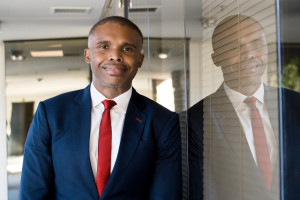As a scoliosis expert, Dr. Harvinder Bedi at Camelback Spine Care has a vast amount of experience treating this difficult problem. From bracing to surgery, here’s a look at how our team can prevent scoliosis from greatly impacting the life of your child.
The causes of scoliosis
One of the primary reasons why scoliosis isn’t preventable is because in 80% of cases, the disorder is idiopathic, which means it develops for reasons unknown. Most of these cases occur in adolescents, and girls are eight times more likely to develop a curve that requires treatment.
Outside of idiopathic scoliosis, the spine curvature can be congenital, which means that a vertebral abnormality occurred during embryonic development.
Rounding out the causes of scoliosis are secondary curvatures that develop on the heels of another problem, such as a neurological or muscular disorder.
Recognizing scoliosis
Since there’s little we can do to prevent scoliosis, early detection and treatment are key, which means it’s important for you to recognize the signs of a developing curvature.Â
The primary symptoms to be on the lookout for include:
- Uneven shoulders
- Uneven hips
- The ribs on either side of your child’s chest aren’t lined up
- A lean in your child’s body
- Your child’s head isn’t centered over their pelvis
The early signs of scoliosis can be difficult to spot, especially if your child is clothed, so it’s important to look at whether their clothes hang incorrectly on their body or they develop an irregular gait.
Slowing the progression of scoliosis
If we find that your child has scoliosis, we can take several approaches. The first is to monitor the condition very carefully so that we can step in and take action should the curvature start to worsen. In some cases, the scoliosis can stop of its own accord and, if the curvature isn’t great (under 25 degrees), your child may be able to lead a perfectly normal life with the condition.
If, however, we see that the scoliosis is continuing to progress, we can outfit your child with a brace that may prevent the curvature from worsening. It’s important to understand that bracing is designed to prevent further curvature, and it cannot correct existing irregularities along their spine.
If your child develops a curvature of 45 degrees or more, they may encounter more serious side effects, such as difficulty breathing, never mind the cosmetic concern. In these cases, we may recommend a surgery in which Dr. Bedi can reduce the curvature in your child’s spine to 25 degrees.
While scoliosis may not be preventable, we assure you that there’s much we can do to prevent the problem from becoming a lifelong concern. For expert management of your child’s scoliosis, contact one of our offices in Sun City, Peoria, or Phoenix, Arizona, for a consultation.

.jpg)




